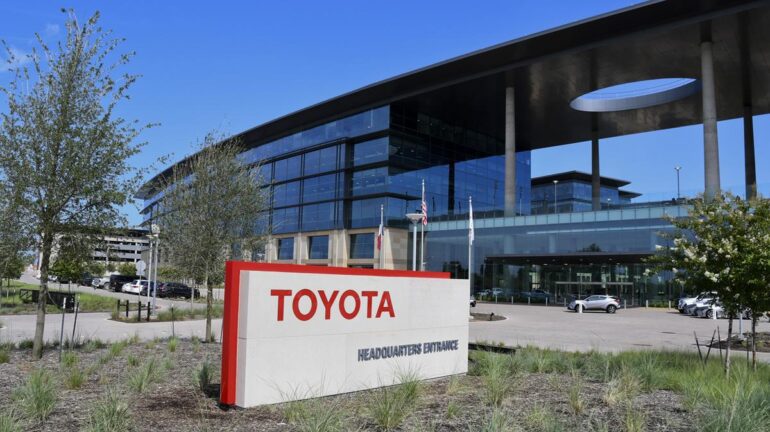TL;DR:
- Toyota Motor North America is leveraging generative AI to revamp its HR and IT service desk operations.
- Jason Ballard, IT executive, aims to eliminate the traditional service desk by 2025 by “insourcing” technical talent.
- The focus is on upskilling team members and increasing automation across the enterprise.
- Toyota’s early adoption of generative AI began with its robotic process automation (RPA) efforts.
- The centralization of help through AgentAsk has resolved thousands of issues, reduced resolution times, and reclaimed productivity hours.
- Ballard envisions broader applications for generative AI technology within the company.
Main AI News:
In the pursuit of insourcing and quality control, Toyota Motor North America is revolutionizing its HR and IT service desk operations through the utilization of generative AI. “One of my bold bets is I want to eliminate our traditional service desk by 2025,” reveals Jason Ballard, the IT executive and general manager for infrastructure and operations services at Toyota Motor North America.
Ballard, responsible for Toyota’s shift to electrification and its digital platform engineering and architecture organization, relies heavily on conversational AI and generative AI to revamp HR and IT service requests. His vision doesn’t entail job cuts; instead, it focuses on “insourcing” technical talent by nurturing team members to assume more valuable roles.
“At the outset, it sounds like we’re cutting jobs, but really, the focus is shifting right with the talent,” he emphasizes. “A level-one technician’s job is kind of repetitive, and I think most people who are in those roles want to get to level two or three. What we’re focused on is how we can up-level, upskill, those team members and move them into higher-value jobs, while at the same time pushing more automation across the enterprise.”
Toyota is an early adopter of generative AI, with its roots in robotic process automation (RPA) efforts. The transition to a unified technology stack in 2015 under the mantra “One Toyota” played a pivotal role in Toyota’s technology evolution.
“As you can imagine, there were a lot of varying systems that were used to run the enterprise for those separate team members,” Ballard recalls. “We were very focused on getting to a common technology stack so our team members could be more efficient.”
In 2017, Ballard introduced RPA, saving over 150,000 recurring hours of staff work in the first year. This initiative shed light on the potential for IT to further automate and optimize processes. In 2020, Ballard took the helm of the digital platform engineering team with a vision for the IT service desk.
“I wanted to change the way our team members engaged with our IT service desk; that was my initial focus,” he explains. “I wanted the ability to invoke a conversation and get to a fast resolution so our team members and I could get back to the important work at hand.”
Centralization of Help
In 2021, Ballard’s team joined forces with AI platform specialist Moveworks to establish a centralized hub for Toyota’s 45,000-plus employees in North America. This hub, known as AgentAsk, offers employees an experience akin to ChatGPT, tailored to meet enterprise requirements such as permissions, integrations, security, privacy, and more.
Over the past year, AgentAsk has resolved nearly 70,000 issues and expedited the resolution of approximately 100,000 more. This shift allows the company’s service desks to focus on crucial accelerated tasks, such as hardware requests and software approvals, rather than mundane tasks like password resets and account unlocks. AgentAsk boasts a mean time to repair (MTTR) of 11.4 minutes, significantly surpassing the industry average of three days.
AgentAsk has reclaimed over 70,000 hours of productivity for employees and agents in the past year alone, effectively offsetting the workload of approximately 25 level-one service technicians each week.
A Bright Future
While AgentAsk has made strides in password resets and account unlocks, Ballard envisions more extensive applications for this technology, such as assisting with policy discussions, including dental policies. Employees have already started asking intuitive questions spanning finance, legal, travel and expenses, and more.
Drawing from several years of experience with generative AI, Ballard offers valuable advice to IT leaders venturing into this technology landscape. He emphasizes the importance of understanding the business problem and opportunity before implementing new technology and underscores the significance of organizational change management.
Furthermore, Ballard encourages IT leaders to work from the perspective of employees and structure technology deployment in a holistic manner, considering the end-to-end nature of the work being performed. Ultimately, he advises keeping the team’s efforts aligned with forward-looking objectives, setting bold bets for the future.
Conclusion:
Toyota’s successful integration of generative AI and AgentAsk has not only improved efficiency and productivity but also highlighted the potential for AI in enhancing employee support and IT operations. This development underscores the growing trend of AI-powered solutions in the business world, offering opportunities for companies to streamline processes, elevate employee experiences, and remain competitive in the market.

